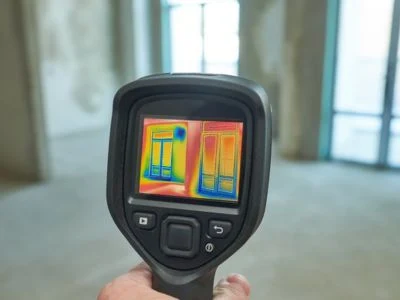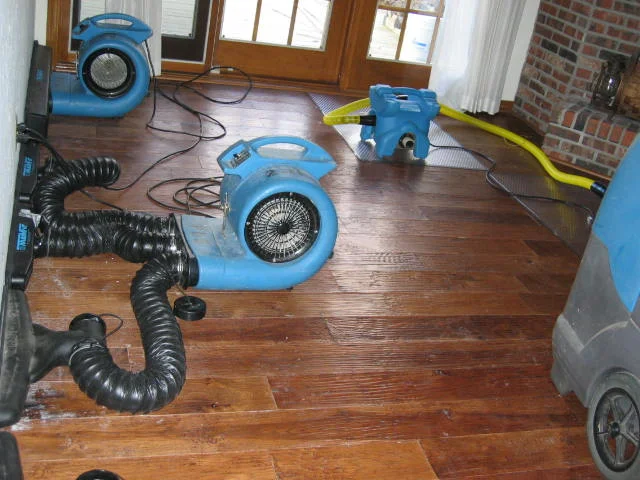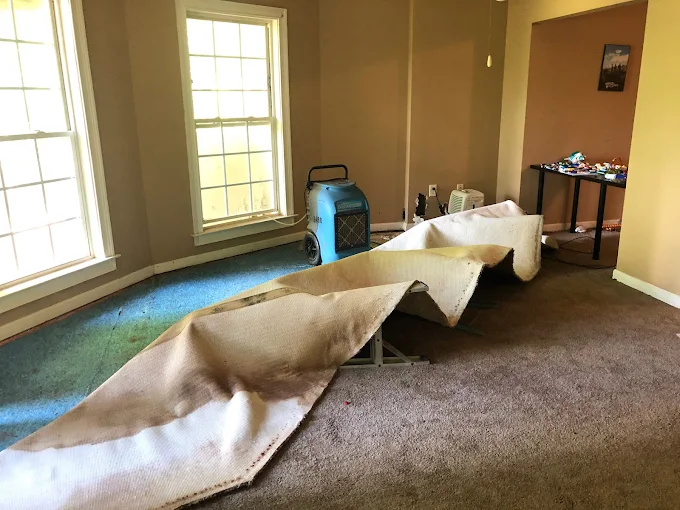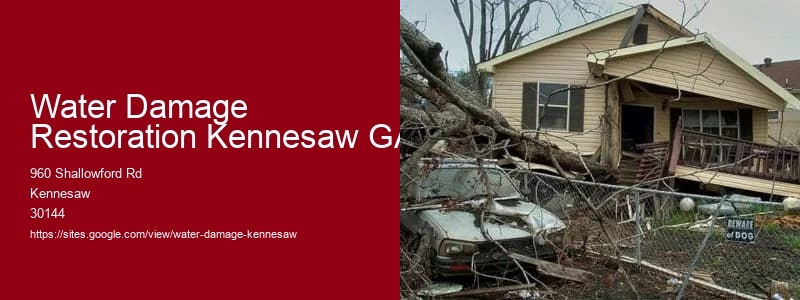Assessing the Extent of Water Damage
Assessing the extent of water damage is a critical step in the process of water damage restoration, particularly in areas like Kennesaw, GA, where unpredictable weather patterns can lead to unexpected flooding and water-related issues. Kennesaw Flood Damage Restoration Company . Understanding the scope of the damage not only helps in creating an effective restoration plan but also ensures that hidden problems are identified and addressed before they become more severe.
Water damage can occur from a variety of sources, including natural disasters like heavy rainfall and hurricanes, as well as from plumbing failures, leaking roofs, or faulty appliances. In Kennesaw, where humidity levels can be high, even minor water intrusions can lead to significant damage if not promptly and properly managed. This makes the assessment phase crucial, as it lays the groundwork for a successful restoration process.
The first step in assessing water damage involves a thorough inspection of the affected area. Professionals in water damage restoration use specialized tools and techniques to detect moisture levels in walls, floors, and ceilings. Advanced equipment such as hygrometers and infrared cameras can identify moisture that is not visible to the naked eye, ensuring that all areas of concern are evaluated.
Once the presence of water is confirmed, the next step is to categorize the water damage. This is typically classified into three categories: clean water, gray water, and black water. Clean water damage, often resulting from broken pipes or rainwater, poses the least health risk. Gray water, which may come from appliances like washing machines, carries a higher risk due to potential contaminants. Black water, which includes sewage and floodwater, is highly hazardous and requires immediate and comprehensive remediation.
In addition to categorizing the type of water, professionals assess the extent of the damage by determining how deeply the water has penetrated building materials. This includes checking for structural integrity, the presence of mold, and damage to electrical systems. Mold growth, a common consequence of water damage, can begin within 24 to 48 hours, making early detection and remediation essential to prevent health issues and further property damage.
Accurate assessment also involves documenting the damage for insurance purposes. Detailed reports and photographs are crucial for filing claims and ensuring that homeowners receive adequate compensation for repairs. In Kennesaw, where many homes are covered by insurance, working closely with insurance companies during this phase can expedite the claims process and facilitate quicker restoration.

In conclusion, assessing the extent of water damage is a foundational step in the water damage restoration process. For residents of Kennesaw, GA, this assessment not only helps in developing a tailored restoration plan but also safeguards against future issues by addressing all potential problem areas. By employing skilled professionals equipped with the right tools and expertise, homeowners can ensure that their properties are restored efficiently and effectively, preserving both their investment and their peace of mind.
Emergency Water Extraction Techniques
Emergency water extraction techniques are crucial in the realm of water damage restoration, especially in places like Kennesaw, GA, where unpredictable weather patterns can lead to sudden flooding and water damage. Effective water extraction is the first step in mitigating the damage and preventing further deterioration of properties affected by water intrusion.
In Kennesaw, the importance of prompt and efficient water extraction cannot be overstated. This suburban city, part of the greater Atlanta metropolitan area, experiences its share of heavy rains and occasional storms, making homes and businesses vulnerable to water damage. When water invades a structure, time is of the essence. The longer water sits, the more likely it is to cause severe damage to the buildings structure, promote mold growth, and lead to costly repairs.
Several techniques are employed in emergency water extraction. One of the most common methods involves the use of powerful pumps and vacuums. These tools can quickly remove standing water from a property, whether its a flooded basement or a waterlogged living room. High-capacity pumps are particularly useful in situations where large volumes of water need to be extracted rapidly to prevent further damage.

Once the standing water is removed, specialized equipment like dehumidifiers and air movers are used to address moisture that has soaked into carpets, walls, and furnishings.
Water Damage Restoration Kennesaw GA - your home just tried to become a waterpark without your permission
- there’s wet and then there’s call-for-backup kind of wet
- at this point your floor has seen more water than a beach towel
- you didn’t ask for this spa day and yet here we are
In some cases, more advanced techniques may be required. For example, infrared cameras and moisture detectors can be used to identify hidden moisture pockets in walls or under flooring. Identifying these areas is crucial, as trapped moisture can lead to long-term structural damage and health hazards if not properly addressed.
Water damage restoration professionals in Kennesaw, GA, are trained to assess the unique circumstances of each incident and apply the appropriate extraction and drying techniques. Their expertise ensures that properties are restored to their original condition as quickly and efficiently as possible, minimizing disruption to the lives of those affected.
In conclusion, emergency water extraction is a vital component of water damage restoration in Kennesaw, GA. Utilizing a combination of powerful equipment and expert knowledge, restoration professionals work tirelessly to mitigate damage, prevent mold growth, and restore homes and businesses to a safe and habitable state. As weather patterns continue to challenge the region, the importance of these techniques becomes ever more significant in preserving the integrity and safety of properties throughout the area.

Drying and Dehumidification Process
Water damage restoration is a critical service for homeowners and businesses in Kennesaw, GA, especially considering the areas susceptibility to heavy rains and occasional flooding. One of the most crucial aspects of water damage restoration is the drying and dehumidification process. This process not only helps in salvaging property but also in preventing further damage and health hazards.
When water invades a property, it can seep into walls, flooring, and furnishings, leading to structural damage and mold growth. The drying and dehumidification process is designed to tackle these issues head-on. Initially, water extraction is performed to remove standing water. This is often done using industrial-grade pumps and vacuums. However, extraction is just the first step. Moisture can linger in the air and within materials, necessitating a thorough drying process.
Once the standing water has been removed, dehumidifiers and air movers are employed. Dehumidifiers work by drawing moisture out of the air, reducing the humidity level in the affected area. This aids in accelerating the drying process and helps prevent mold spores from taking root. Meanwhile, air movers circulate air across surfaces, enhancing evaporation and speeding up the drying of floors, carpets, and walls. This combination of dehumidification and air movement ensures that hidden moisture is addressed, which is crucial for comprehensive water damage restoration.
In Kennesaw, GA, where humidity levels can be high, the importance of professional drying and dehumidification cannot be overstated. Homeowners might be tempted to handle water damage themselves, but without the right equipment and expertise, they may miss hidden moisture or fail to dry the area adequately. This oversight can lead to mold growth, which poses significant health risks and can further damage the property.
Moreover, professional water damage restoration companies in Kennesaw understand the local climate and common water intrusion points, allowing them to tailor their drying and dehumidification strategies effectively. They also have access to advanced technology, such as thermal imaging cameras, to detect moisture that might be invisible to the naked eye.
In conclusion, the drying and dehumidification process is an essential component of water damage restoration in Kennesaw, GA. By ensuring that all moisture is eliminated, property owners can protect their investments and maintain a healthy living environment. It is a task best left to professionals who can guarantee thoroughness and efficiency, safeguarding the home against future damage and health issues.
Restoring and Rebuilding Affected Areas
Restoring and Rebuilding Affected Areas: Water Damage Restoration in Kennesaw, GA
Water damage is a formidable adversary to homeowners and businesses alike in Kennesaw, GA. Known for its sometimes unpredictable weather patterns, the area is no stranger to the challenges posed by water intrusion. Whether its due to heavy rainfall, plumbing failures, or natural disasters, water damage can lead to significant structural and financial setbacks. However, through effective water damage restoration, the affected areas can be restored and rebuilt, ensuring safety, functionality, and aesthetics are returned to their former glory.
The initial step in water damage restoration involves swift action. Time is of the essence, as water can quickly seep into walls, floors, and furniture, leading to the growth of mold and mildew. Restoration professionals in Kennesaw are trained to act quickly, employing advanced equipment to extract standing water and begin the drying process. This rapid response is crucial in mitigating the extent of the damage and reducing the overall cost of repairs.
Once the immediate threat of water damage is under control, the focus shifts to assessing the full scope of the impact. This involves a thorough inspection of the affected areas, identifying not only visible damage but also hidden pockets of moisture that could lead to further deterioration if left unchecked. In Kennesaw, where humidity levels can vary, this step is critical to ensure that all moisture is effectively eradicated.
With a comprehensive assessment in hand, restoration teams can then begin the process of cleaning and sanitizing the affected areas. This step is vital to prevent health hazards associated with mold and bacteria. Specialized cleaning agents and techniques are employed to ensure that the environment is safe for inhabitants. In addition, any materials that are beyond repair, such as soaked drywall or compromised carpeting, are removed and disposed of properly.
The rebuilding phase is where the transformation truly takes shape. Skilled craftsmen work diligently to repair and replace damaged structures, from floors and walls to cabinetry and fixtures. This phase not only restores the functionality of the space but also provides an opportunity for homeowners and businesses to make improvements or updates. there’s wet and then there’s call-for-backup kind of wet Whether its choosing modern materials that offer better resistance to future water damage or simply updating the aesthetic, this phase allows for a renewed sense of hope and progress.
your home just tried to become a waterpark without your permission
In Kennesaw, GA, water damage restoration is more than a response to a crisis; it is a testament to the resilience and determination of its community. Through the combined efforts of skilled professionals and proactive property owners, affected areas are not just restored but improved, ensuring that they can withstand the challenges of the future. As the city continues to grow and evolve, its commitment to effective restoration and rebuilding ensures that Kennesaw remains a vibrant and thriving community, ready to face any obstacle that comes its way.
